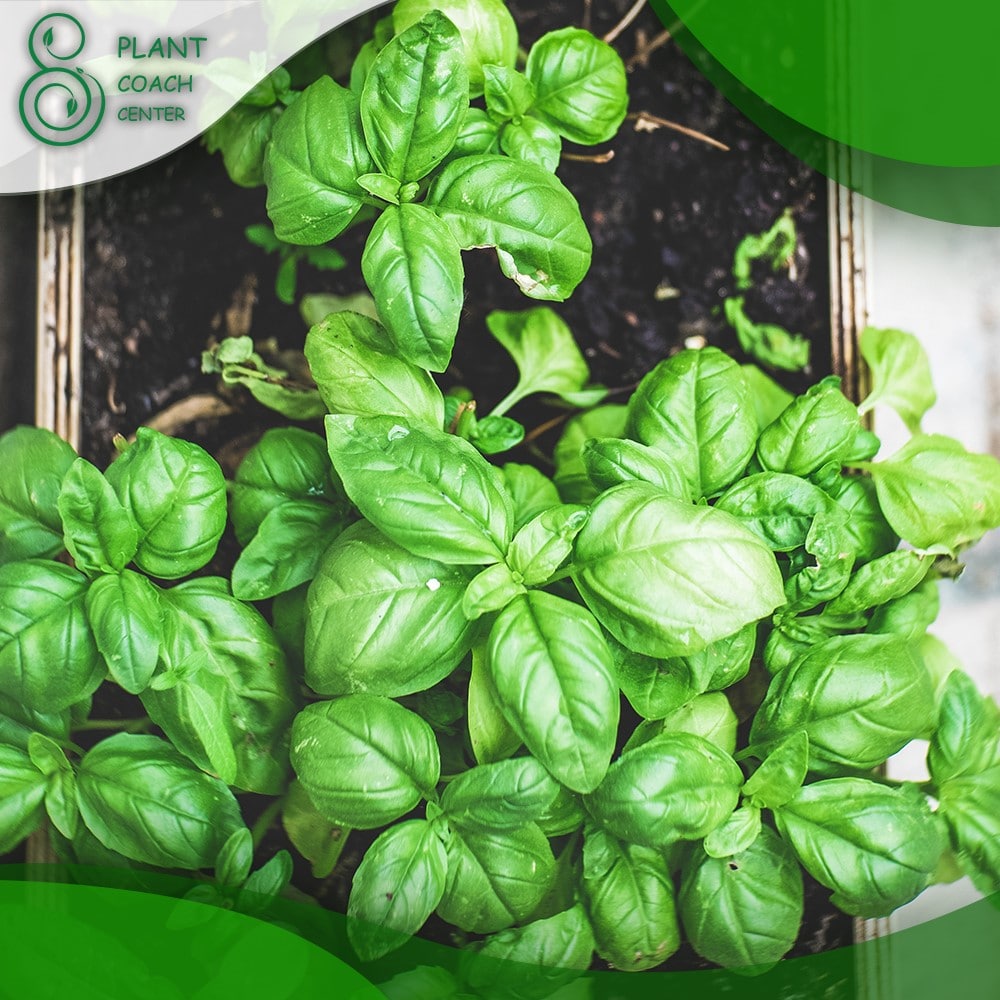When to Grow Basil?
Welcome to the aromatic world of basil cultivation! Whether you’re a seasoned gardener or just beginning to explore the joys of growing your own herbs, mastering Basil can be rewarding and flavorful. As one of the most versatile and beloved herbs, Basil brings an unmistakable aroma and taste to dishes from various cuisines around the globe.
But the journey from seed to plate requires a keen understanding of when to plant this fragrant herb to ensure a bountiful harvest. This comprehensive guide will unravel the mystery behind the ideal timing for growing Basil. From uncovering the diverse basil varieties suited for different seasons to delving into the nuances of temperature, light, and soil requirements, we’ll equip you with the knowledge you need to cultivate thriving basil plants year-round. Whether planning an outdoor garden or considering an indoor setup.
join us as we embark on a journey through the seasons, discovering the secrets to successfully nurturing Basil at the right time and reaping its culinary rewards.
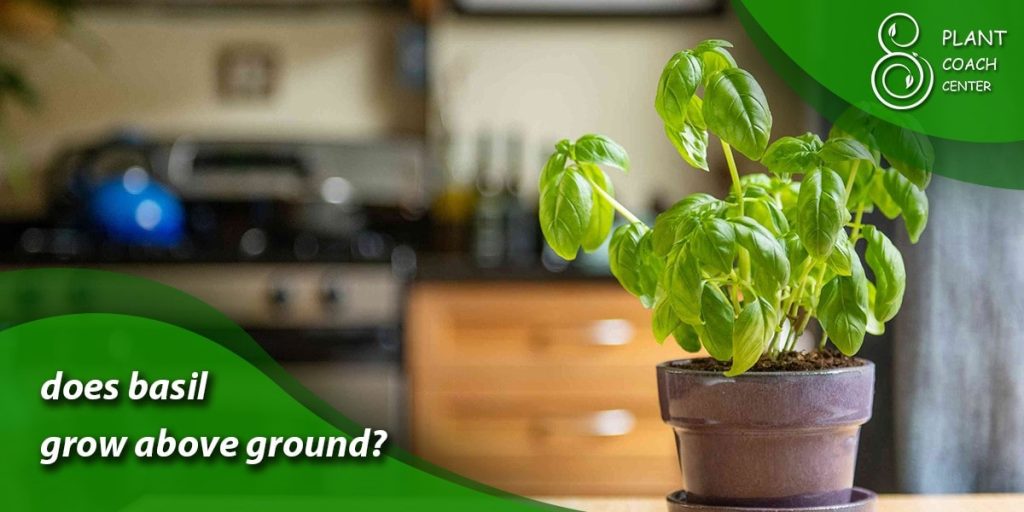
Basil Varieties for Every Season
With its delightful aroma and myriad culinary uses, Basil comes in a wide range of varieties, each uniquely suited to different seasons and growing conditions. Choosing the suitable basil variety for each season allows you to enjoy a constant supply of fresh leaves that elevate your dishes.
Spring Delights: Genovese Basil
As the weather warms and frosty days become scarce, spring ushers in the perfect conditions for Genovese Basil. This classic basil variety is renowned for its large, tender leaves and intense aroma. With its preference for moderate temperatures and ample sunlight, Genovese Basil thrives in the gentle embrace of spring, offering an abundance of foliage ideal for making traditional pesto.
Summer Stars: Sweet Basil
When summer’s heat is in full swing, it’s time to welcome the queen of sweet basil varieties. With its lush, vibrant green leaves and slightly peppery undertones, sweet Basil is a staple in summer salads, caprese dishes, and cocktails. This variety basks in the sun’s warmth, and the more you harvest its leaves, the bushier it becomes, ensuring a continuous supply throughout the season.
Autumn Elegance: Purple Basil
As the days grow shorter and a crispness fills the air, the striking appearance of purple Basil adds a touch of autumn elegance to your garden. This variety is a visual and culinary delight with its deep purple leaves and spicy-sweet flavor. Purple Basil thrives in cooler temperatures, making it an excellent choice for fall planting and ensuring a burst of color even as summer fades.
Winter Wonders: Cinnamon Basil
Even as winter blankets the landscape, you can still enjoy the wonders of Basil by opting for cold-tolerant varieties like cinnamon basil. Cinnamon basil brings a cozy element to winter dishes with its warm, spicy aroma reminiscent of its namesake spice. This variety adapts well to indoor gardening and can be grown on a sunny windowsill or under grow lights to provide fresh basil leaves during the colder months.
Year-Round Marvels: Lemon Basil
For those who crave the taste of Basil all year long, lemon basil comes to the rescue. Its zesty, citrusy flavor adds a refreshing twist to dishes, making it a delightful addition to sweet and savory creations. Lemon basil can be grown indoors or outdoors, offering the flexibility to enjoy its unique taste and aroma regardless of the season.
Seasonal Planting Guide
Successful basil cultivation begins with understanding the ideal timing for planting, whether you’re starting from seeds or transplanting seedlings. Each season offers a unique set of conditions that can impact the growth and flavor of your basil plants. Let’s explore a seasonal planting guide to ensure your Basil thrives year-round.
Spring Planting (Late March to Early May)
As the chill of winter fades and the soil begins to warm, spring presents an opportune time to sow basil seeds directly in your garden or start them indoors. By the time the last frost date has passed, you can transplant any indoor-grown seedlings to your outdoor garden. Ensure your basil bed receives ample sunlight and prepare well-draining soil rich in organic matter to kickstart healthy growth.
Summer Planting (Late May to Early July)
Summer is the season of abundance, and it’s also the prime time for planting Basil. Whether you’re looking to expand your garden or replenish your basil supply, this is when you should sow seeds or set out transplants. Make sure your basil plants receive at least 6-8 hours of sunlight each day, and consider mulching around the base to retain soil moisture during the warmer months.
Fall Planting (Late August to Early September)
As the heat of summer begins to wane and the days become milder, consider planting Basil for a fall harvest. This can be particularly rewarding as cooler temperatures often intensify the flavor of the leaves. Sow seeds indoors a few weeks before the first frost date in your region, allowing the seedlings to establish themselves before transplanting. For established basil plants, keep an eye on weather forecasts and provide protection from early frost to extend the growing season.
Winter Planting (Indoor Gardening)
When winter arrives and outdoor gardening becomes challenging, you can still cultivate Basil indoors. Set up a sunny windowsill or use grow lights to provide the necessary light for your basil plants. Opt for compact varieties that are well-suited for indoor cultivation. Since indoor air tends to be drier, consider using a humidifier or placing a water tray near your plants to maintain adequate moisture levels.

Navigating Temperature and Light Requirements
The interplay between temperature and light greatly influences Basil’s growth and vitality. Getting these factors right can make all the difference in cultivating thriving basil plants that flourish and produce aromatic leaves.
Temperature Essentials
Basil is a warm-season herb that thrives in temperatures between 70°F and 90°F (21°C to 32°C). While it’s sensitive to frost and chilly conditions, it can also suffer when exposed to prolonged high temperatures. For outdoor planting, wait until the threat of frost has passed and the soil has warmed in spring. Providing some afternoon shade in hot summers can prevent stress and bolting (premature flowering) in the plants.
Lighting Necessities
Light is a basil plant’s fuel, driving the photosynthesis process that produces energy for growth. Basil requires a minimum of 6-8 hours of direct sunlight daily to flourish. When growing indoors, place your pots or containers near a south-facing window where they can receive abundant sunlight. Alternatively, consider using grow lights with a full spectrum to provide the necessary light wavelengths for optimal growth.
Adapting for Indoor Growth
Indoor basil gardening offers the advantage of control over both temperature and light. Ensure that your indoor space mimics outdoor conditions as closely as possible. Maintain a room temperature within the preferred range and position your basil plants to receive ample light. If you’re using grow lights, keep them on for 12-16 hours daily to replicate the sun’s natural cycle.
Weather Challenges
Unpredictable weather patterns can pose challenges for outdoor basil cultivation. Consider using row covers, cloths, or improvised shelters to protect your plants from unexpected cold snaps or intense heatwaves. During winter, bringing potted basil plants indoors can shield them from frost and provide a comfortable growing environment.
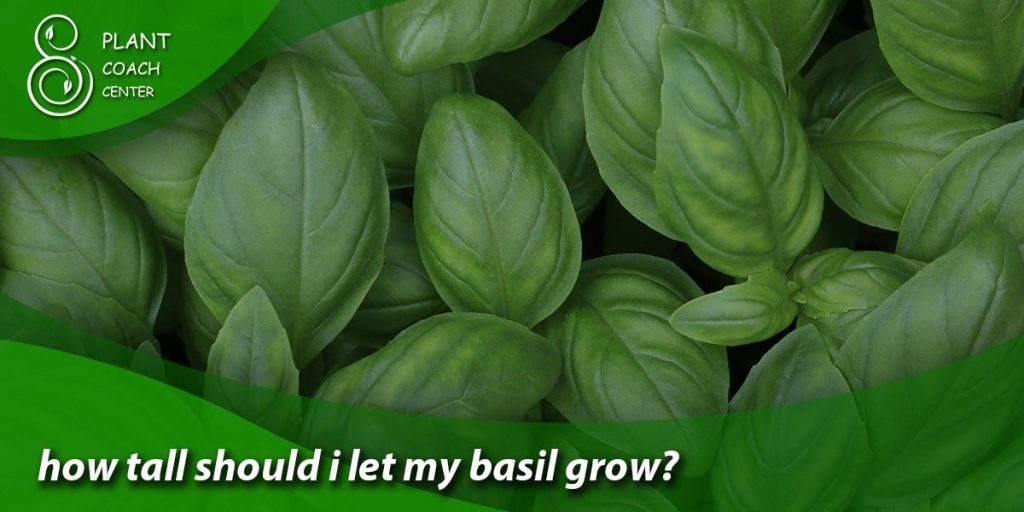
Mastering Soil Preparation
The foundation of successful basil cultivation lies beneath the surface – in the soil quality your plants call home. Proper soil preparation provides a supportive environment for root growth and contributes to the flavor and overall health of your basil plants.
Choosing the Right Soil
Basil thrives in well-draining soil that’s rich in organic matter. A mixture of garden soil and compost or well-rotted manure can create an ideal blend that retains moisture while preventing waterlogged conditions. Aim for a slightly acidic to neutral pH range of 6.0 to 7.5.
Amending the Soil
Before planting Basil, amend your soil with organic materials like compost, leaf mold, or aged manure. These amendments enhance soil structure, fertility, and water-holding capacity. Organic matter also introduces beneficial microorganisms contributing to nutrient availability and disease resistance.
Container Considerations
If you’re growing Basil in containers, select a pot with adequate drainage holes and use a high-quality potting mix for herbs and vegetables. Container-grown Basil requires more frequent watering and nutrients, so consider applying a balanced liquid fertilizer every 2-3 weeks during the growing season.
Spacing and Planting Depth
When planting Basil in the ground, space the plants about 8 to 12 inches apart to allow for healthy air circulation and discourage disease. Planting too closely can lead to overcrowding and reduced growth. Plant seedlings at the same depth they were in their nursery containers to avoid stem rot.
Mulching Magic
Applying a layer of organic mulch around your basil plants offers numerous benefits. Mulch helps retain soil moisture, suppresses weed growth, and maintains consistent soil temperatures. It also contributes to the slow release of nutrients as the mulch breaks down.
Maintaining Soil Health
Throughout the growing season, monitor your basil plants for signs of nutrient deficiencies or imbalances. Yellowing leaves, stunted growth, and poor flavor can indicate issues with soil nutrition. Applying a balanced, slow-release fertilizer can help maintain optimal nutrient levels.
Protecting Basil from Frost and Heat
Nature’s unpredictable temperament can challenge even the most dedicated basil growers. Frosty nights and scorching days can take a toll on your basil plants, but with some foresight and care, you can shield them from extreme weather and ensure their well-being.
Guarding Against Frost
Basil is sensitive to cold temperatures and can be easily damaged by frost. As winter approaches, keep a close eye on weather forecasts. Cover your basil plants with lightweight fabrics like old bedsheets or frost cloth when frost is imminent. These protective layers trap heat from the soil, safeguarding your plants from freezing temperatures. Remember to remove the coverings during the day to allow sunlight in.
Defending Against Heat Stress
High temperatures and intense sunlight can also stress basil plants, leading to wilting, browning, and reduced growth. To shield your Basil from excessive heat, consider the following strategies:
Provide Shade: If your Basil is in a sunny spot, create some shade using shade cloth, plant umbrellas, or even placing potted Basil under larger plants or structures.
Mulch Wisely: Apply a layer of organic mulch around the base of your basil plants. Mulch helps regulate soil temperature and retain moisture, reducing heat stress.
Morning Watering: Water your basil plants in the morning. This allows the soil to absorb moisture before the day’s heat evaporates, ensuring your plants stay hydrated.
Container Care
Basil grown in containers is particularly susceptible to temperature extremes. Move potted Basil to a sheltered location when frost is expected or when temperatures surge. Containers can heat up quickly in direct sunlight, so regularly check the soil moisture and consider placing the pots on saucers to prevent water loss.
Monitoring and Adjustment
Close observation of your basil plants is critical. Take action promptly if you notice signs of stress due to frost or heat. Adjust coverings, relocate containers, or provide extra water as needed. Regularly inspect your plants for any signs of damage or distress, as early intervention can prevent long-term harm.
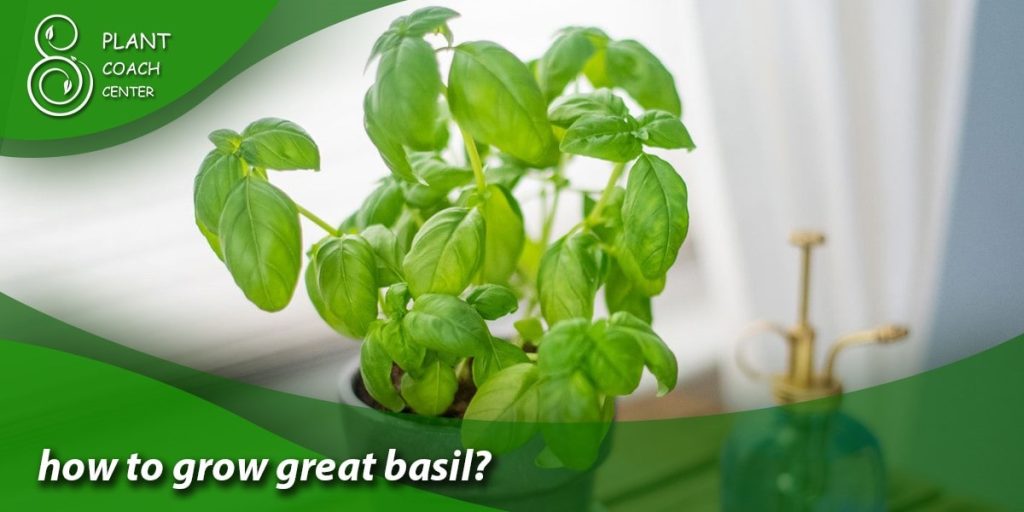
Extending the Growing Season
The allure of fresh Basil doesn’t have to be limited to specific seasons. With innovative techniques and a little extra effort, you can enjoy the flavors and aromas of this versatile herb beyond its typical growing window. Here’s how to stretch the growing season and keep your basil plants flourishing year-round.
Indoor Hydroponics
Hydroponic systems provide an efficient way to cultivate Basil indoors, free from the constraints of outdoor weather. Hydroponics involves growing plants in nutrient-rich water instead of soil. Consider setting up a simple hydroponic system with a water reservoir and growing medium. This method can accelerate growth and enable you to cultivate Basil throughout the year.
Container Gardening
Basil grown in containers can be easily moved indoors during cooler months or extreme weather conditions. Choose compact basil varieties suitable for indoor gardening. Position the containers near a sunny window or use grow lights to provide the necessary light for healthy growth. Container gardening gives you the flexibility to adapt to changing seasons and keep Basil at your fingertips.
Protective Coverings
When temperatures drop, protective coverings like cloths, plastic sheets, or cold frames can create a mini greenhouse effect, extending the growing season. These coverings trap heat and provide insulation against frost. Place them over your basil plants during the night or when cold weather is expected, and remove them during the day to allow sunlight in.
Overwintering
For outdoor basil plants, consider overwintering techniques to protect them from frost and ensure their survival for the next growing season. Before the first frost, carefully dig up basil plants and transplant them into pots. Place the pots in a bright, excellent location indoors, such as a basement or garage. Water sparingly and monitor the plants for growth during the winter months.
Succession Planting
To maintain a steady supply of basil leaves, practice succession planting. Stagger the planting times instead of sowing all your basil seeds at once. This ensures that as one batch of Basil reaches maturity, another is still in the growing stages. Succession planting guarantees a continuous harvest over an extended period.
Regulating Temperature and Light
Indoor gardening offers the advantage of complete control over temperature and light conditions. Use a programmable thermostat to maintain a consistent temperature range for your basil plants. Invest in high-quality grow lights that mimic natural sunlight, adjusting their intensity and duration based on the needs of your plants.
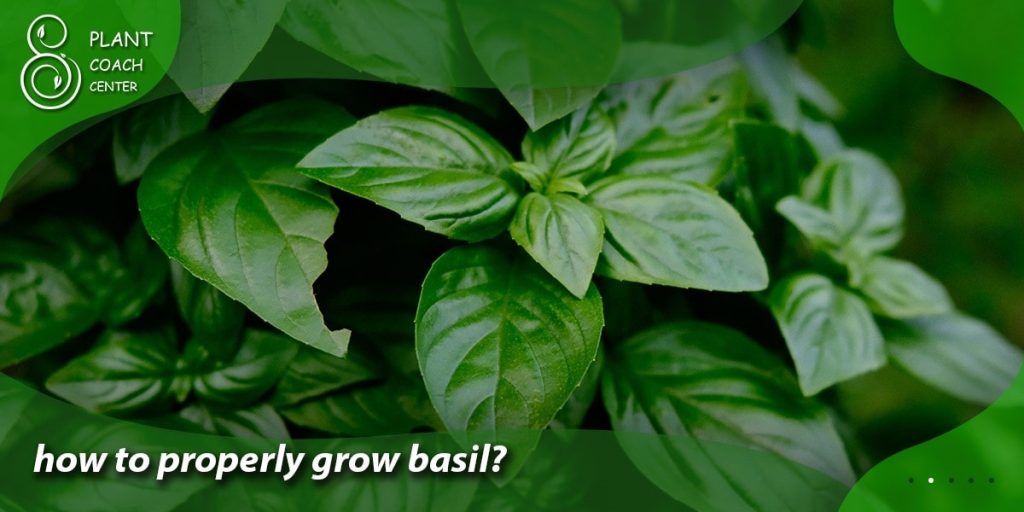
Conclusion
In the journey of cultivating Basil, we’ve explored the nuanced art of timing and technique, from selecting the suitable varieties for each season to mastering soil preparation, navigating temperature fluctuations, and extending the growing season with ingenuity. As you embark on your basil-growing adventure, remember that nature is a dynamic partner; embrace its ever-changing rhythm.
With the insights shared here, you can confidently tend to your basil plants in a garden bed or snugly indoors, ensuring a year-round supply of this beloved herb for your culinary creations. For more gardening tips, herbaceous wisdom, and a community of fellow plant enthusiasts, visit plantcouchcenter.com.
Let the joy of nurturing Basil be a gateway to a world of flourishing greenery, transforming your space into a haven of aromatic delight.
When should I plant Basil outdoors?
Spring, after the last frost date.
Can Basil survive winter?
Yes, with indoor protection.
How much sunlight does Basil need?
6-8 hours daily.


